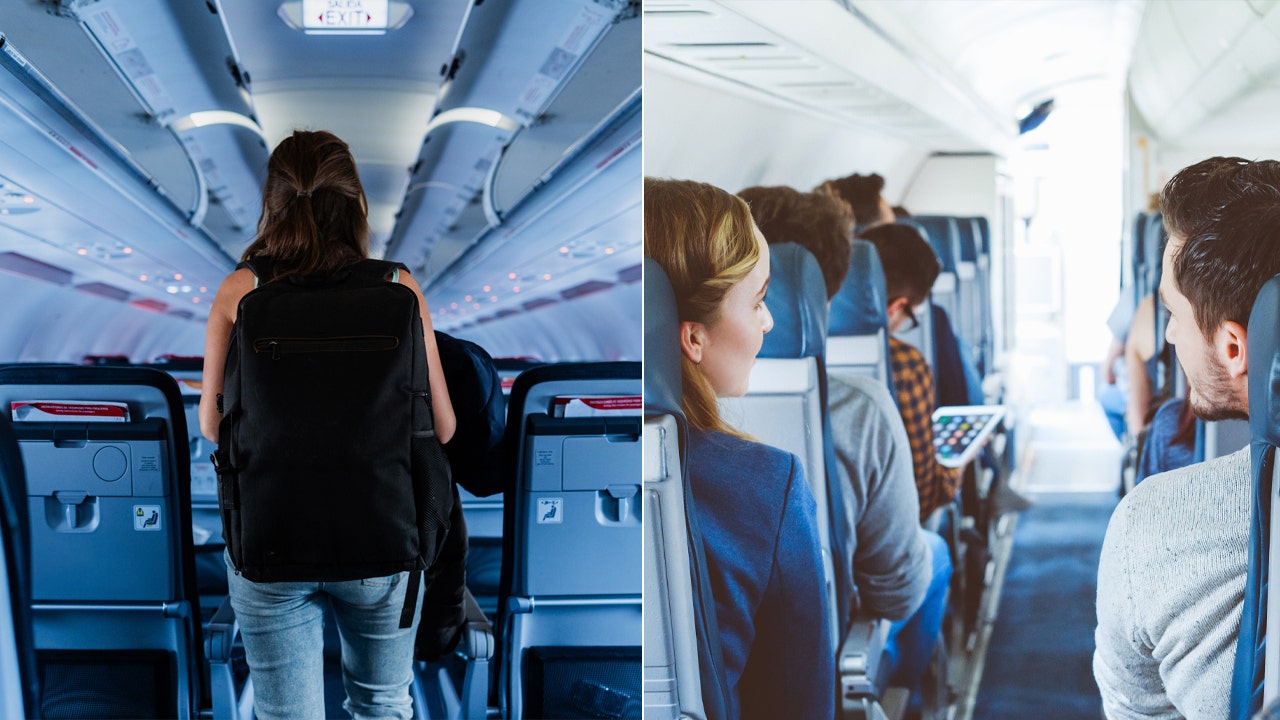Controversy in the Skies: Passenger Claims Window Seat Incident Was No Accident
The skies have always been a realm of wonder and adventure, but recent events have turned an ordinary flight into a battleground for opinions and discussions. A peculiar incident involving a passenger allegedly squatting in a window seat has ignited a fervent debate among travelers and social media users alike. As videos and firsthand accounts circulate, the incident raises significant questions about etiquette and behavior in confined spaces, particularly in air travel.
The Incident: A Brief Overview
During a recent flight, a video surfaced showing a passenger claiming that another individual had taken an unconventional approach to securing a window seat. Allegedly, this passenger had been found squatting in a seat that was not their own, causing discomfort and confusion among fellow travelers. The video quickly went viral, leading to a myriad of reactions, ranging from disbelief to outrage.
While the details of the incident are still being debated, one thing is certain: it has sparked a conversation about the unwritten rules of flying, particularly concerning the coveted window seat.
Understanding Passenger Behavior
To comprehend the reactions to this incident, it’s essential to explore the psychology behind passenger behavior in confined spaces such as airplanes. The dynamics of flying can often lead to heightened emotions, as travelers face various stressors, including security checks, cramped seating, and long wait times.
- Personal Space: Airplanes significantly restrict personal space. Each passenger’s area is limited to a small seat, which can lead to feelings of claustrophobia.
- Social Dynamics: The social interactions in airplane cabins are unique. Passengers often navigate complex social norms, from who gets to use the armrest to the unspoken rules of seat selection.
- Flight Etiquette: There are expectations regarding behavior, such as not reclining one’s seat abruptly or keeping noise levels down. Violating these norms can escalate tensions.
In this context, the actions of the passenger in the window seat may reflect a broader struggle for personal space and comfort, which many fliers can relate to.
The Window Seat: A Coveted Prize
The allure of the window seat cannot be overstated. Many passengers vie for this position for various reasons, including:
- Scenic Views: The opportunity to gaze out at the clouds and landscapes from above is undeniably appealing.
- Control: Window seat occupants often feel a sense of control over their immediate environment, as they can lean against the wall and avoid the disturbance of fellow passengers.
- Privacy: Sitting by the window can create a sense of seclusion, particularly during long flights.
Given these factors, it’s no wonder that disputes can arise over seating arrangements. In the case of the alleged squatter, the desire for a window seat may have driven their actions, highlighting how high the stakes can feel in such cramped quarters.
Social Media’s Role in Escalating Controversy
As the incident gained traction, social media platforms became the battleground for opinions. Users quickly divided into factions, some defending the squatter’s actions while others condemned them. The discussions included:
- Support for the Passenger: Some argued that the squatter was simply trying to find comfort in an uncomfortable situation, citing the need for personal space.
- Criticism: Conversely, many expressed outrage, insisting that such behavior was disrespectful and indicative of a broader decay in social etiquette.
- Humor and Memes: The incident also spawned a plethora of memes and jokes, showcasing the internet’s ability to turn a serious situation into a source of entertainment.
This divisiveness underscores the power of social media in shaping public opinion and amplifying controversies, often leading to larger discussions about behavior norms in public spaces.
Etiquette in the Air: The Need for Guidelines
The incident has sparked discussions about the need for clearer guidelines regarding passenger behavior on flights. While there are no formal regulations governing actions in the air, certain etiquette rules have emerged over time. Here are some key principles that could help foster a more pleasant flying experience:
- Respect Personal Space: Being mindful of the space occupied by others is crucial. Passengers should avoid encroaching on neighboring seats.
- Communicate: If there’s a dispute over seating or behavior, approaching the other passenger politely can help resolve the issue amicably.
- Follow Airline Policies: Airlines often have specific rules regarding behavior. Familiarizing oneself with these can help prevent misunderstandings.
Establishing and adhering to these guidelines can promote a more harmonious atmosphere in the skies, ultimately benefiting all travelers.
The controversy surrounding the passenger who allegedly squatted in a window seat serves as a reminder of the complexities of human behavior in confined spaces. While the incident may have been shocking, it opens the door for necessary conversations about etiquette, personal space, and social norms in air travel.
As we continue navigating the skies, it’s imperative for all travelers to cultivate an environment of respect and understanding. Whether it’s securing the desired window seat or navigating a crowded cabin, a little courtesy goes a long way in ensuring that air travel remains a positive experience for everyone on board.
In an age where social media amplifies every incident, it’s more important than ever to reflect on our behaviors and how they impact those around us. After all, the skies should be a place of adventure, not controversy.
See more BBC Travel World



